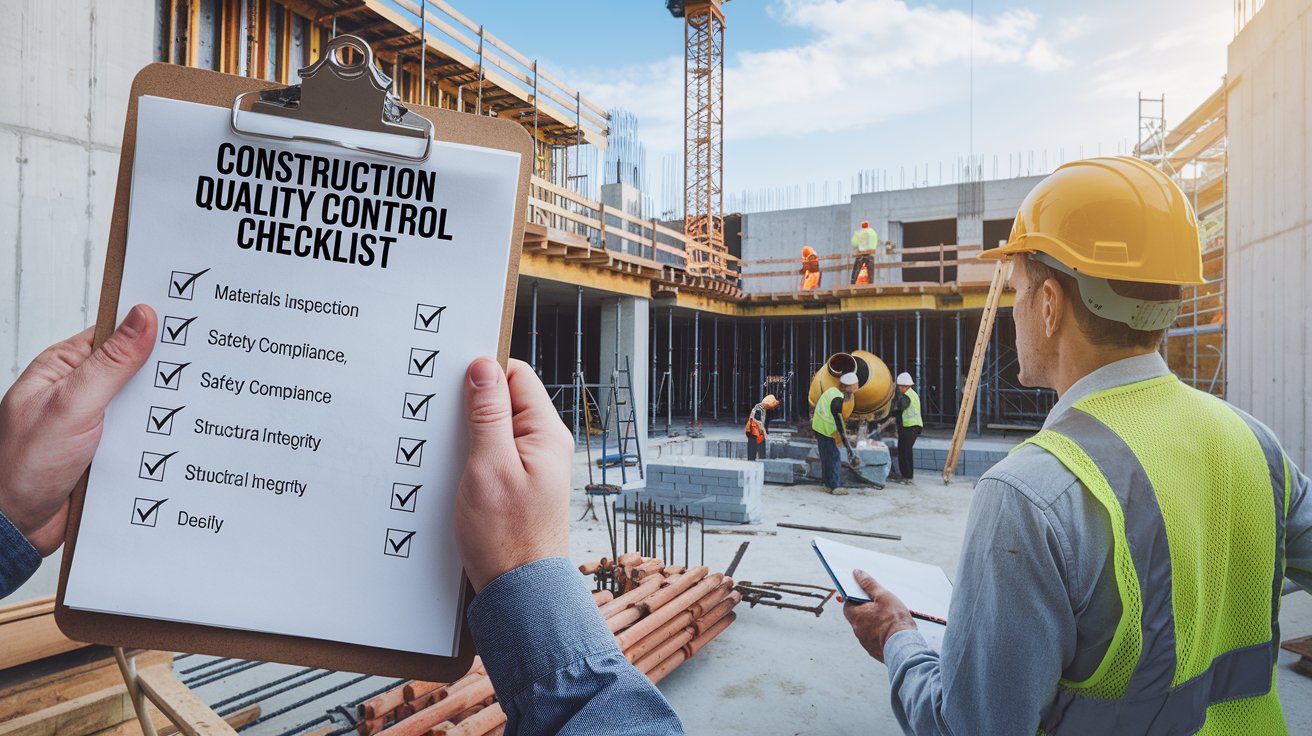In the construction sector, quality control (QC) is essential for delivering projects that exceed client expectations, regulatory standards, and safety needs. A well-designed Construction Quality Control Checklist is a vital tool for assuring consistency, eliminating faults, and fostering a culture of excellence on every job site.

Importance of Quality Control in Construction
Quality control in construction helps to avoid costly mistakes, rework, and compliance difficulties. Teams can recognize and resolve issues before they escalate by inspecting each process in a systematic manner. This proactive strategy not only enhances project outcomes but also saves time, resources, and money in the long term.
Key Components of a Construction Quality Control Checklist
- Project Documentation Review
- Verify all permits, licenses, drawings, and specifications are up-to-date.
- Confirm compliance with local building codes and standards.
- Site Inspection and Safety Compliance
- Conduct site inspections to ensure safety gear, signage, and barriers are in place.
- Check adherence to OSHA standards and other relevant safety guidelines.
- Materials Quality Verification
- Inspect all materials for quality and compliance with project specifications.
- Ensure materials are stored in optimal conditions to avoid degradation.
- Structural Integrity and Foundation Checks
- Confirm proper excavation, soil stabilization, and foundation laying techniques.
- Inspect rebar, concrete, and other foundational components for adherence to structural standards.
- Electrical and Plumbing Inspections
- Verify electrical systems are installed according to code and safely insulated.
- Ensure plumbing lines are properly sealed, leak-free, and have adequate pressure.
- Finishing Quality Control
- Check for uniformity in painting, flooring, and tile work.
- Inspect doors, windows, and other finishes for proper alignment and function.
- HVAC and Mechanical Systems
- Confirm installation of HVAC units meets design specifications.
- Inspect mechanical systems for safety, efficiency, and correct setup.
- Environmental and Sustainability Standards
- Review adherence to environmental regulations, such as waste management and pollution control.
- Ensure sustainable practices, like energy-efficient materials or renewable energy sources, are incorporated as per project plans.
- Client and Stakeholder Review
- Conduct a final walkthrough with clients to verify that all checklist items meet their expectations.
- Address any final requests or adjustments before project sign-off.
Tips for Implementing an Effective Quality Control Checklist
- Use Digital QC Checklists: Digital tools and mobile apps simplify checklist management, provide real-time updates, and help teams track progress efficiently.
- Train Teams on QC Standards: Regular training ensures that everyone understands the checklist’s purpose, knows how to use it, and values its role in delivering quality.
- Schedule Regular Audits: Periodic inspections can reveal trends in quality issues, helping teams address root causes instead of recurring symptoms.
A construction quality control checklist acts as a road map for project success, ensuring that each phase satisfies high standards of quality, safety, and compliance. By addressing each item in a systematic manner, construction teams may produce consistent results, maintain client trust, and maintain project integrity.
